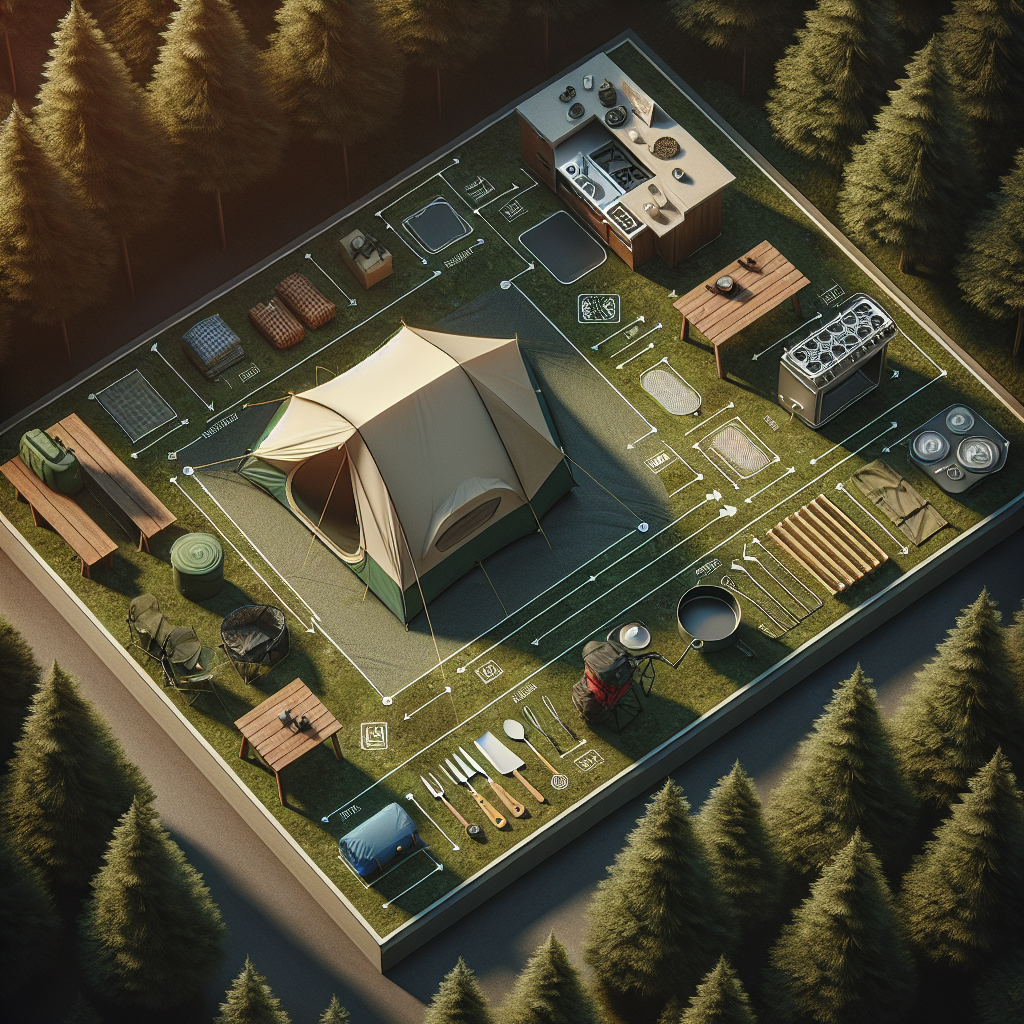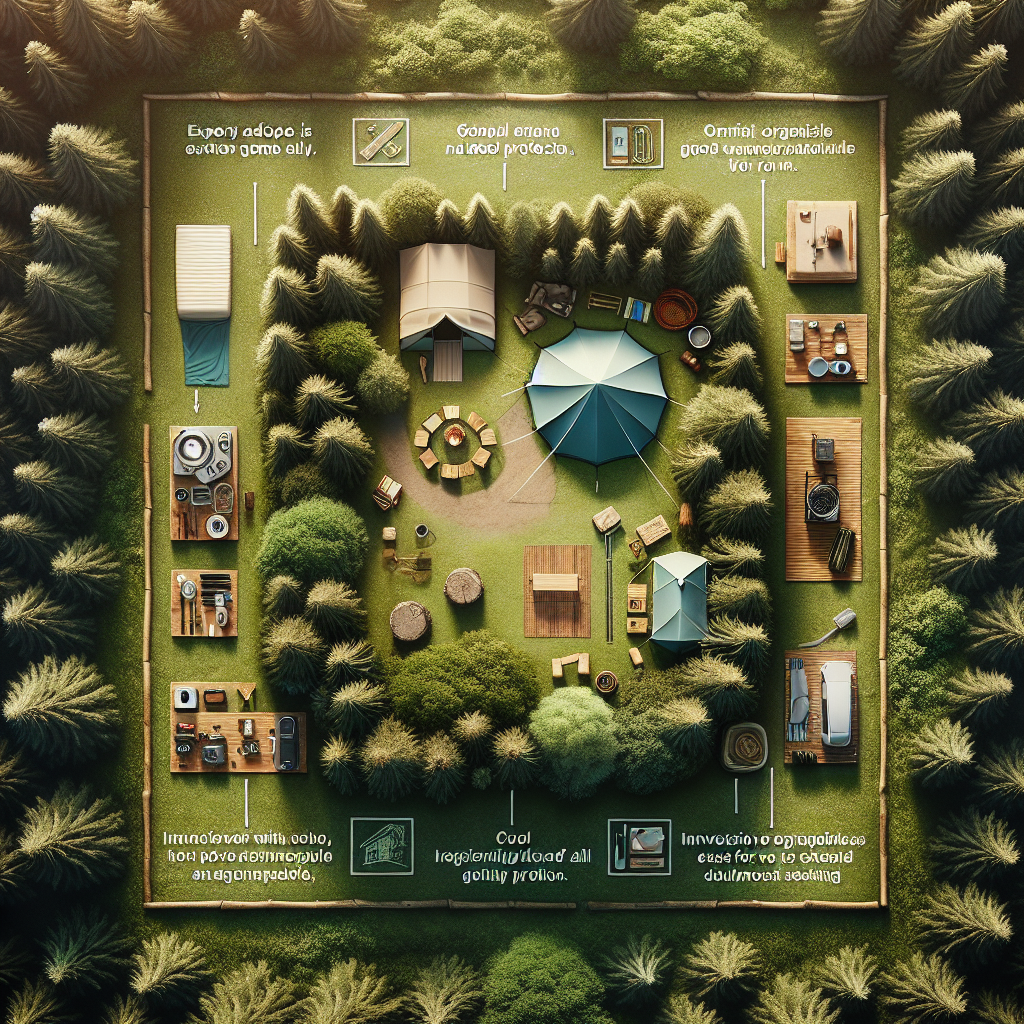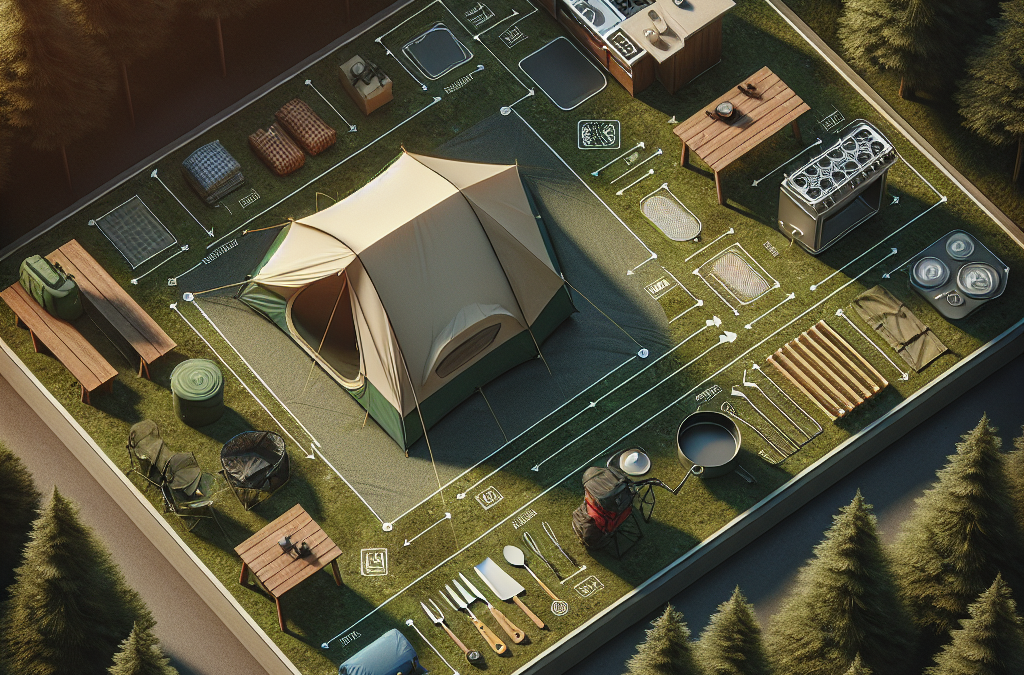Imagine finding yourself in the great outdoors, surrounded by lush green trees, hearing the soft humming of the wildlife, and feeling the cool wind brushing against your skin. However, the charm of the outdoors can quickly fade away if your campsite is a disaster. Time to turn that chaotic camping environment around with smart organization and efficiency tactics. In the article “Campsite Setup: Organizing For Efficiency And Comfort”, you’ll find valuable tips and tricks to transform your campsite into a sanctuary of comfort and efficiency, making your outdoor experience unforgettable. Let’s embark on this exciting adventure together.

Understanding the Basics of Campsite Setup
Setting up a campsite is a key aspect of any camping trip. Doing it correctly can make your stay in the wilderness more enjoyable and less stressful. Let’s start by tackling the basics.
The Importance of a Well-Organized Campsite
A well-organized campsite makes everything easier. From cooking meals to getting a good night’s sleep, managing your campsite well allows you to focus more on the fun activities such as hiking, fishing, and s’more making. It also ensures that you have easy access to everything you need and reduces the risk of losing or damaging your items.
Basic Principles for Campsite Setup
Fundamentally, setting up a campsite involves finding the right spot, setting up your sleeping area, and organizing your kitchen and living area. It also means considering where to place your bathroom area and how to store items. Each aspect should be planned carefully, thinking about practicality and comfort.
Factors to Consider in Selecting a Campsite
When selecting a campsite, consider the geographical layout, including slope, exposure, and soil types, to make sure you won’t face problems later. Look for a natural shelter, but avoid camping under large trees with dead branches. Also consider proximity to water sources and the possibility of encountering wildlife.
Choosing the Right Spot for Your Tent
The spot you choose for your tent greatly influences the quality of your sleep and your overall camping experience.
Criteria for Tent Placement
A flat area, free of rocks, roots, and other obstructions, is ideal for setting up a tent. Make sure it is on high ground, to avoid any water-log issues during the rain. The spot should also be a safe distance from your campfire.
Impact of Weather and Terrain on Tent Location
Weather conditions and terrain play a crucial role in selecting a tent location. You would prefer the entrance of your tent to face away from prevailing winds and yet have enough ventilation. Select a shady spot if you’re camping in summer.
Safety Considerations in Positioning Your Tent
Safety considerations include camping away from dead or leaning trees that may pose risk during wind gusts. Avoid game trails to decrease chances of unwelcome animal visitors during the night. Be sure your site is a safe distance from your fire pit.
Organizing the Inside of Your Tent
Once your tent is pitched perfectly at your chosen site, the next step is to organize the inside efficiently.
Efficient Space Utilization in a Tent
Space inside a tent is limited. Make the most of it by only storing essentials, like sleeping bags and pillows. Storing items on the floor of your tent could get uncomfortable quickly.
Balancing Comfort and Practicality
When arranging things inside your tent, strike a balance between comfort and practicality. Keep your sleeping area clean and free of items that could cause discomfort or a tripping hazard in the night.
Methods for Managing Personal Items in a Tent
Stack personal items like clothes and toiletries on one side of the tent. Use storage pockets inside the tent to store items like cell phones, glasses, or books. And always keep a torch handy for the dark hours.
Setting Up Your Kitchen Area
The camp kitchen is fundamental to your campsite. This is where you’ll cook, eat, and often gather for a chat.
Choosing a Location for Your Camp Kitchen
Your kitchen should be set up downwind and a good distance away from your sleeping area to prevent attracting wildlife to your tent. It also ideally should be near a water source for convenience when cooking and washing dishes.
Tools for a Functional Campsite Kitchen
Your campsite kitchen should include a cooking device, such as a camp stove or portable grill and utensils. Also needed are food storage containers to keep critters out, and pots and pans.
Safety and Sanitation Aspects in Campsite Cooking
Always have water or a fire extinguisher close in case of a fire. Keep food sealed to prevent insects or animals from being attracted to it. Dispose of waste properly and wash dishes immediately after use.

Creating a Comfortable Living Area
Your living area is a space to relax, eat, and socialize.
Setting Up a Communal Area for Relaxation
Arrange chairs and a table, if you have them, around the campfire area. This communal area can serve as a dining room and lounge, perfect for storytelling, games, or relaxing.
Furniture and Items for a Comfortable Living Area
Bring lightweight, portable, and collapsible furniture. A tarp or canopy provides shade for sunny afternoons and shelter for unexpected rain showers.
Managing Wind, Sun, and Bugs in the Living Area
Position your communal area strategically in relation to the wind direction to manage smoke from the campfire. Having bug repellent and sunscreen on hand is always a good idea.
Establishing a Bathroom Area
Having a designated bathroom area is crucial for both hygiene and conservation reasons.
Determining the Location for a Campsite Bathroom
Choose a location that’s far enough from your campsite and any water sources to avoid contamination. A spot that has some level of privacy is ideal.
Ensuring Privacy and Cleanliness in the Bathroom Area
A portable camping toilet or a properly dug cathole can serve as a toilet. Hand sanitizer should always be available. Pack some kind of lightweight material for coverage if there’s no natural privacy.
Eco-friendly Practices for Campsite Hygiene
Use biodegradable toilet paper and sanitary products, and always pack out your waste. Keep soap and other toiletries eco-friendly.
Personal Storage Solutions for Campsite
Organized storage not only keeps your campsite tidy but also makes it easy to find everything you need.
Types of Storage Options Available
Consider storage boxes and collapsible camping wardrobes. Stool organizer combos are also practical.
Arranging Items for Easy Access
Keep most-used items at the top and less-needed ones at the bottom. Organize by categories: cooking implements together, cleaning supplies together, and so on.
Weatherproof Storage Solutions
Weatherproof bags are useful for storing clothes and electronics. Coolers for food storage should be bear-proof.
Maintaining a Clean and Eco-friendly Campsite
Strive to keep your campsite clean and have as minimum an impact on the environment as possible.
Keeping the Campsite Clean During the Stay
Clean up after every meal and avoid leaving food scraps around. Everyday cleaning goes a long way.
Methods for Waste Disposal
Pack in, pack out. Bring enough garbage bags. Leave no garbage behind.
Impact on the Environment and Leaving No Trace
Be aware of your actions’ impact on the environment. Follow the Leave No Trace principles and always leave the campsite as you found it.
Organizing for Safety and Emergency Preparedness
Safety considerations are essential when camping.
Having a First Aid and Emergency Plan
A well-stocked first aid kit is crucial. Have an emergency plan in place and make sure all members of your party are aware of it.
Safekeeping of Emergency Tools and Equipment
Have emergency tools like a fire extinguisher, bear spray, or a whistle handy. Keep them in an easy-to-reach location.
Safety Tips for Dealing with Wildlife
Store food and scented items properly. Understand how to behave if you see a wild animal. Maintain a safe distance.
Dismantling and Leaving the Campsite
When it’s time to leave, proper dismantling of the campsite is essential.
Proper Steps to Dismantle the Campsite
Take down your tent and pack up all your gear. Pick up all litter, even if it’s not yours.
Checklist for Ensuring You Leave No Trace
Follow a checklist to make sure you don’t leave anything behind: gear, litter, or alterations to the landscape.
Examining and Learning from Your Campsite Setup
Take a final look at your campsite setup. See what worked well and what you can improve for next time. With each camping trip, you can refine your setup skills, making each subsequent trip smoother and more enjoyable.
Setting up an efficient and comfortable campsite is an art that involves aspects such as site selection, tent placement, internal organization, living, and kitchen area setup, sanitation concerns, and storage solutions. Equally essential are the practices to maintain cleanliness and uphold safety measures. Efficient preplanning, organization, and respect for environment make camping a rewarding experience.

